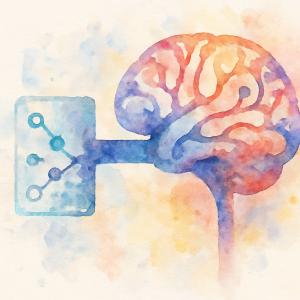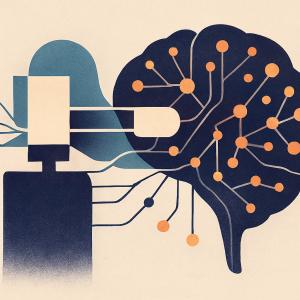New Study Establishes Supremacy of Complexity Science and Randomness in Machine Learning for Neurosymbolic Computation
Unsupervised, model-free method preserves key data better than traditional statistical techniques for next generation cognitive ML for multi-modal data.
Neurosymbolic computation combines the pattern-recognition power of neural networks with the logic and reasoning abilities of symbolic systems. It’s like giving a machine both the intuition to recognise apples and oranges from pictures and the reasoning skills to understand a recipe or solve a riddle about them.
The work, authored by an international consortium of researchers from top universities, presents the Minimal Information Loss Selection (MILS) algorithm—a model-free, unsupervised method that preserves the most structurally and causally significant elements of data while reducing its size. Unlike traditional statistical approaches, which rely on assumptions about data distribution or require supervision, MILS is based on algorithmic probability and perturbation analysis, allowing it to detect and retain meaningful patterns—including nonlinear and recursive structures—often invisible to conventional methods.
Algorithmic complexity is a way of measuring how simple or complicated something really is, based not on how it looks, but on how short a set of instructions you’d need to recreate it. Imagine trying to describe an apple: if it's a perfect red sphere with a short stem, you can describe it quickly—it has low algorithmic complexity. But a strangely shaped, multi-coloured apple with odd bumps would take longer to describe—it’s more complex. Algorithmic probability builds on this by asking: what’s the chance that something (like an apple or an image) could be produced by a short random model or computer program? If it’s common or patterned, the chance is higher.
Meanwhile, algorithmic randomness refers to data that cannot be simplified at all—it looks truly random, like a pile of mixed apples and oranges with no obvious order. This differs from traditional compression techniques like ZIP or LZW, or measures like Shannon entropy, which only look at repeated patterns or frequency—like counting how many red apples versus green ones you’ve seen. Those methods can miss deeper structure. Algorithmic methods go further, detecting order even in things that look random on the surface but are actually generated by hidden rules—like discovering all your apples and oranges were laid out by a clever robot rather than by chance.
This new approach offers a general-purpose solution to core challenges in machine learning, demonstrating exceptional performance in preserving topological features in graphs and networks, as well as delivering the highest classification accuracy per bit in compressed image data. Tests conducted on standard benchmarks such as the MNIST dataset show that MILS surpasses leading dimensionality reduction algorithms including PCA, kernel methods, and spectral sparsification, especially in memory-constrained and quantised environments. These are common methods used widely in the ML community to characterise real-world data. Crucially, this new method does so by identifying the elements of data that contribute most to its algorithmic description, using no statistical shortcuts or training labels.
Beyond performance, the framework breaks new ground in its unification of symbolic reasoning and statistical learning. The authors show that MILS can serve as a foundation for neurosymbolic computation—providing a pathway to intelligent systems that combine the strengths of data-driven learning with the interpretability and generalisation capabilities of symbolic approaches. Grounded in algorithmic information theory, this work represents the first scalable and computable implementation of ideas long considered mathematically intractable.
The findings carry implications for fields ranging from biology and neuroscience to network science, image analysis, and next-generation AI architectures. The suite of tools led by MILS and other variations introduced in the paper, are particularly well-suited for applications requiring robust generalisation, such as edge computing, retrieval-augmented generation systems, and model- and causal-driven AI.
The full paper is available under open access.
PR Team
OxfordIA
email us here
Legal Disclaimer:
EIN Presswire provides this news content "as is" without warranty of any kind. We do not accept any responsibility or liability for the accuracy, content, images, videos, licenses, completeness, legality, or reliability of the information contained in this article. If you have any complaints or copyright issues related to this article, kindly contact the author above.
From Setback to Success: New Memoir Inspires Readers to Persevere and Excel Through Life’s Toughest Challenges
Emmanuel Jacobo Unveils Groundbreaking Biblical Study in Purgatory in New Testament
Bailey Law Deepens Compliance Advisory Services to Meet Evolving Employer Needs
Więcej ważnych informacji
 Jedynka Newserii
Jedynka Newserii

 Jedynka Newserii
Jedynka Newserii

Polityka

Polska może się stać Doliną Krzemową Europy. Potrzeba jednak wsparcia finansowego start-upów i mocniejszej deregulacji
Polskie start-upy skoncentrowane są głównie na rozwoju nowoczesnych technologii informatycznych i cyfrowych. Wyraźny nacisk na oprogramowanie i aplikacje oraz big data i data science wskazuje na silne zainteresowanie narzędziami analitycznymi i rozwiązaniami wspierającymi transformację cyfrową w różnych branżach – wynika z raportu „Rynek start-upów w Polsce. Trendy technologiczne”, który został opracowany w 2024 roku w MRiT. Zdaniem europarlamentarzystów Polska ma szansę się stać Doliną Krzemową, jednak rozwój start-upów blokowany jest m.in. przez ograniczony dostęp do finansowania oraz niekorzystne i nadmierne regulacje.
Transport
Na półmetku wakacji ceny paliw na stacjach nie powinny się wyraźnie zmienić. Znaczące różnice między regionami i stacjami

W sierpniu ceny benzyny, oleju napędowego i autogazu powinny pozostać na poziomach z lipca – uważa ekspertka rynku z firmy Reflex. Wyższe będą zawsze na stacjach premium, tych, które oferują bogatszą ofertę dodatkową, promocje dla uczestników programu lojalnościowego, oraz w regionach, w których tradycyjnie paliwa są droższe ze względu np. na wyższą siłę nabywczą mieszkańców. Różnice mogą sięgać kilkudziesięciu groszy na litrze. Obszary, wokół których te wartości oscylują, zależą z kolei od sytuacji globalnej. Warto patrzeć na sytuację na Bliskim Wschodzie i w Ukrainie.
Polityka
A. Mularczyk (PiS): Nawiązanie poważnego dialogu z Niemcami jest konieczne nie tylko w kontekście reparacji. Powinien być podpisany traktat polsko-niemiecki

– Nie wystarczy jednorazowy gest czy inicjatywa. To musi być podjęcie dialogu, być może też przygotowanie nowej umowy bilateralnej, nowego traktatu polsko-niemieckiego, który regulowałby wszystkie obszary, które wynikały ze skutków II wojny światowej – mówi Arkadiusz Mularczyk, poseł do Parlamentu Europejskiego z PiS-u. Podkreśla, że proces ten nie będzie łatwy, bo wymaga konsekwencji i stanowczości, ale widzi szansę w prezydenturze Karola Nawrockiego, który już zadeklarował kontynuację starań w tym zakresie. Zdaniem europosła wsparciem w polsko-niemieckim dialogu może być administracja Donalda Trumpa.
Partner serwisu
Szkolenia

Akademia Newserii
Akademia Newserii to projekt, w ramach którego najlepsi polscy dziennikarze biznesowi, giełdowi oraz lifestylowi, a także szkoleniowcy z wieloletnim doświadczeniem dzielą się swoją wiedzą nt. pracy z mediami.





![Nestlé w Polsce podsumowuje wpływ na krajową gospodarkę. Firma wygenerowała 0,6 proc. polskiego PKB [DEPESZA]](https://www.newseria.pl/files/1097841585/fabryka-nesquik_1,w_85,r_png,_small.png)




.gif)

 |
| |
| |
|